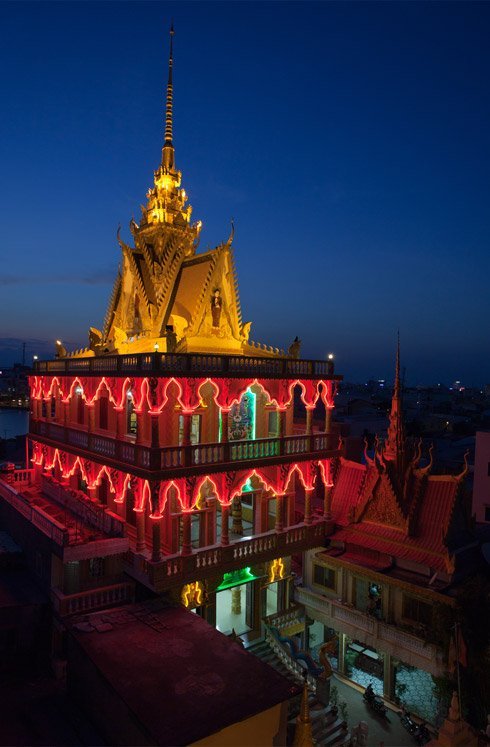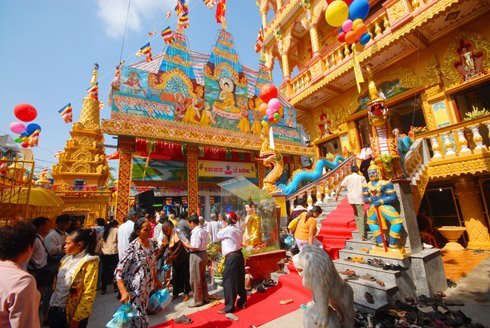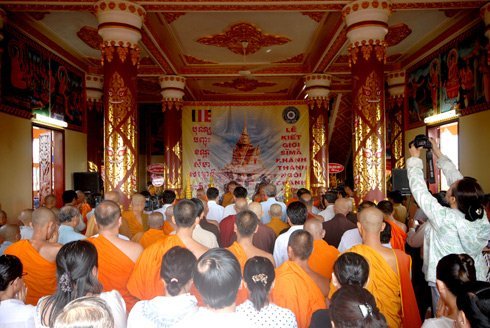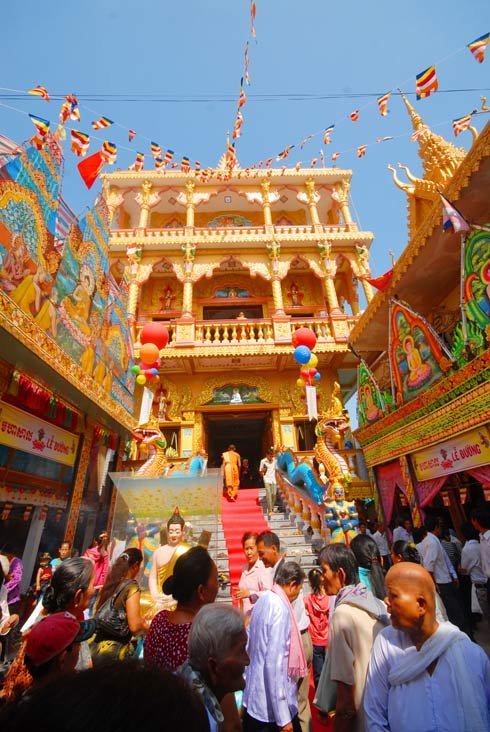Chùa Pitu Khosa Răngsey (Vietnamese: Chùa Vien Quang) was built in 1948 in the city of Can Tho of the Khmer minority farmers. At that time on the ground were little buildings with thatched roofs. During the liberation struggle against the French, and especially during the war against the Americans, the pagoda was a place of refuge for hundreds of young men from Saigon and throughout the Delta, to escape the convocation in the Saigon puppet army. At the same time it became a stronghold of the National Liberation Front. During the Tết Offensive in 1968, the pagoda was almost completely destroyed by rockets in a helicopter attack by the Americans. The then head of the pagoda Lâm Navany had to flee and was shot in 1970, when he tried to escape to Cambodia. After the liberation the reconstruction was initially at a slow pace. It was not until 1996, when Ly Hùng was made abbot, there was an extensive renovation and restoration work. Lý Hùng, who received his training at a young age in school of the pagoda, is a member of the Central Council of the Buddhist Church of Vietnam. After more than four years of construction time the new main temple of the Pagoda was solemnly inaugurated last Saturday. The building with three floors is 50 meters high and has a total area of 800sqm. The construction cost of 12 billion VNĐ (around 45,000 euros) were applied entirely by Buddhists from home and abroad. On the ground floor is the main hall of the pagoda, where the children of the the Khmer are taught into the Cambodian language. On the second floor, the ceremonies take place, the third is used for meditation. The elaborate decorations on the columns are in the style of Angkor. The 12 wooden windows were designed by well-known artists with reliefs depicting Buddhist legends. Upstairs 16 paintings can be seen, they present Buddha’s life from birth to his entry into Nirvana. In the pagoda currently live 45 monks and novices who practice Theravada Buddhism and study and support social projects for poor families in the Mekong Delta. It provides the number of monks and students to increase in the next period to about 100. many greetings Cathrin Cathrin’s Blog: Zwischen Traditionen und Moderne







